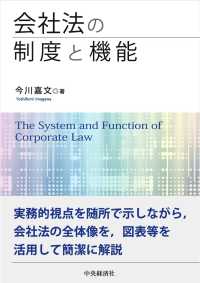Full Description
This book explores a profoundly negative narrative about legally segregated schools in the United States being "inherently inferior" compared to their white counterparts. However, there are overwhelmingly positive counter-memories of these schools as "good and valued" among former students, teachers, and community members. Using interview data with 44 former teachers in three North Carolina counties, college and university archival materials, and secondary historical sources, the author argues that "Jim Crow's teachers" remember from hidden transcripts—latent reports of the social world created and lived in all-black schools and communities—which reveal hidden social relations and practices that were constructed away from powerful white educational authorities. The author concludes that the national memory of "inherently inferior" all-black schools does not tell the whole story about legally segregated education; the collective remembering of Jim Crow's teachers reveal a critique of power and a fight for respectability that shaped teachers' work in the Age of Segregation.
Contents
Contents
Part One: Teachers and Teaching
Chapter One: "Dying with One's Boots On": Collective Remembering of Legally Segregated Schools for Blacks and Its Teachers
Chapter Two: You Must Remember This: Reconstructions of the Geopolitics of
Race and Racism in the Jim Crow South
Chapter Three: Voices of Collective Remembering: Black Teachers in Edgecombe,
Nash and Wilson Counties
Part Two: Hidden Transcripts Revealed
Chapter Four: "The Way We Found Them to Be": Black Teachers and the Politics of Respectability in Jim Crow North Carolina
Chapter Five: A Strategy of Opportunity: Black Teachers and the Making of a New
Form of Capital
Part Three: Remembering Jim Crow's Teachers
Chapter Five: "The Half Had Not Been Told": Hidden Transcripts Made Public








